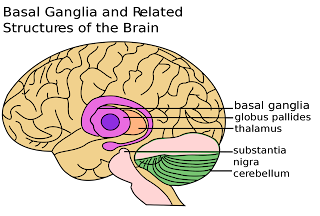Whenever we see something we like, a meeting of an addiction, or we are doing something that we love, our brain produces a chemical hormone called dopamine that is created in a particular area of the brain's basal ganglia located in the region of the midbrain and the substance is called nigra. Dopamine is an important chemical or neurotransmitter that helps the movement of the body to be more coordinated and smooth and transmits signals between neurons at the synapse. When 60-80% of the dopamine-producing cells are damaged and stops producing enough dopamine, this causes the imbalance between dopamine and acetylcholine, causing so, the visible symptoms of Parkinson's disease. Parkinson's disease is also leading the development of Lewy bodies in the nerve cells that cause dementia with Lewy bodies and the obstruction of communication between cells. Parkinson's disease commonly affects older people, the majority of the cases around the age of 50. While Parkinson's disease is not fatal, it is progressive, which means, that gets worse over time.
 |
| What is parkinsons disease |
The earliest symptoms of PD are tremor or shaking of the hands while resting and usually begins at the start of a new activity, such as getting up and walking. The real cause of Parkinson's disease so far is unknown, but most experts believe that it may be linked to genetic and environmental factors.
Major visible symptoms of Parkinson's disease:
- Trembling or shaking of the hands of other members, while in the rest
- The rigidity and increased tone in the muscle of the body
- Slowed body movement (bradykinesia)
- Difficulties in maintaining balance.
You can read another articles like Parkinson Treatment, Parkinsons Causes, Parkinsons Medications, Vascular Parkinsonism.
parkinsons disease
parkinsons
parkinsons disease dementia













